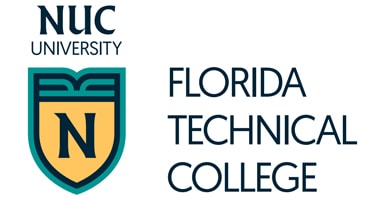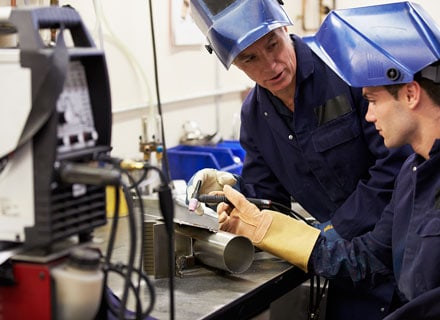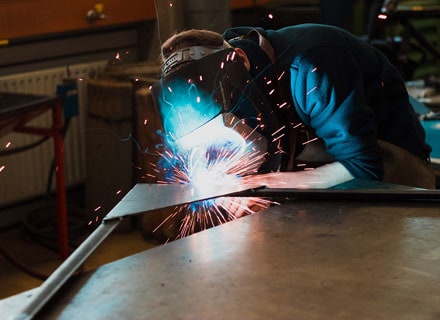Welding Schools & Career Guide: The Definitive Resource
| Last Updated
Is Welding a Good Trade? (The “Silver Tsunami” Opportunity)
If you are asking “Is welding a good career?”, the data says yes—but with a caveat. It is one of the most secure trade careers available today, provided you treat it as a high-tech profession, not just manual labor.
The industry is currently facing a massive labor shortage often called the “Silver Tsunami”—the mass retirement of Baby Boomers. According to AWS Welding Workforce Data, the U.S. will face a deficit of over 300,000 welding professionals by 2029.
This deficit creates leverage for new entrants. As demand spikes and the workforce shrinks, skilled welders are seeing increased bargaining power. Additionally, with the resurgence of domestic manufacturing and massive defense contracts (like the submarine industrial base expansion), welding is a critical infrastructure role insulated from many automation risks.
The modern welder is high-tech. The image of the dirty, low-tech welder is obsolete. The welder of 2025 operates in symbiosis with robotics. You aren’t just melting metal; you are likely programming “Cobots” (collaborative robots) and working with advanced CNC systems.
Top Welding Schools
Sponsored Listings



Lincoln Tech
- Welding Technology
Lincoln Tech
- Denver
- East Windsor
- East Point (Atlanta)
- Melrose Park
- Indianapolis
- Columbia
- Mahwah
- South Plainfield
- Lincoln
- Grand Prairie
- Welding Technology
Tulsa Welding School
- Jacksonville, Florida
- Tulsa, Oklahoma
- Dallas, Texas
- Houston, Texas
- Professional Welder
All-State Career School
- Essington, Pennsylvania
- Pittsburgh, Pennsylvania
- Welding Technology
Fortis
- Birmingham, Alabama
- Atlanta, Georgia
- Cincinnati, Ohio
- Cuyahoga Falls, Ohio
- Houston South, Texas
- Welding Technology
Southern Technical College
- Auburndale, Florida
- Orlando, Florida
- Sanford, Florida
- Tampa, Florida
- Welding Technology
Universal Technical Institute
- Avondale
- Long Beach
- Rancho Cucamonga
- Miramar
- Lisle
- Canton
- Bloomfield
- Mooresville
- Exton
- Austin
- Dallas/Fort Worth
- Houston
- Welding Technology
Trade School vs. Apprenticeship: Which Path is Right?
Most students get paralyzed deciding between a trade school and a union apprenticeship. Neither is “better,” but they serve different goals. If you want to enter the workforce quickly, trade school is the accelerator. If you want zero debt and don’t mind a longer timeline, apprenticeship is the answer.
See the comparison below to decide which fits your situation:
| Feature | Trade School (Vocational College) | Union Apprenticeship |
|---|---|---|
| Financial Model | Tuition-based (You pay ~ $5k - $25k) | Wage-based (You get paid to learn) |
| Time to Completion | 7 - 24 Months | 3 - 5 Years |
| Curriculum Focus | Breadth: You learn multiple processes (MIG, TIG, Stick) to be employable anywhere. | Depth: You master specific skills required by that specific employer/union. |
| Entry Barrier | Low (Open enrollment) | High (Competitive testing/interviews) |
| Best For... | Career switchers who want to get to work fast. | Those seeking long-term stability and zero debt. |
The ROI Reality: While a 4-year degree can cost $100,000+, a welding program typically costs between $5,000 and $25,000. When you factor in entering the workforce 2-3 years earlier than a university graduate, the financial head start is significant. For a deeper dive, read our guide on Welding Apprenticeships.
What You Will Actually Learn (The Curriculum)
To rank for high-paying jobs, you need more than just a steady hand. A top-tier curriculum (often aligned with AWS SENSE standards) covers the “Big Four” processes and the hidden skill that makes or breaks a career: Math.
-
The “Big Four” Processes:
- SMAW (Stick): The workhorse. Used in outdoor construction and pipelines because it handles wind and dirt well.
- GMAW (MIG): The manufacturing standard. Fast, clean, used in factories and automotive.
- GTAW (TIG): The money maker. High-precision welding for aerospace and motorsports. Hardest to learn, highest pay.
- FCAW (Flux-Core): High-speed structural welding for shipbuilding and heavy steel.
-
The “Hidden” Curriculum (Math & Symbols):
Many students fear the math. Don’t. It is applied geometry. You will learn to read Blueprints and welding symbols (AWS A2.4 standard) and use trigonometry to calculate pipe fitting angles. This is what separates a “welder” from a “laborer”.
-
Virtual Reality (VR):
Modern schools use systems like Lincoln Electric VRTEX to build muscle memory without wasting materials. It accelerates learning and provides data-driven feedback on your travel speed and angles.
💰 How to Get Welding Training for Free (Funded)
We see thousands of searches for “free welding classes.” While “free” is rare, funded is common if you know where to look. Do not pay tuition until you check these three sources:
- WIOA (Workforce Innovation and Opportunity Act): This is a federal grant that can pay 100% of tuition, books, and tools for eligible displaced workers or low-income adults. Search for your state’s “Eligible Training Provider List” (ETPL) on CareerOneStop.
- Job Corps: If you are aged 16-24, this is the gold standard. It is a tuition-free residential program that provides housing, meals, and welding training. It is administered by the U.S. Department of Labor.
- AWS Foundation Scholarships: The American Welding Society awards over $2.7 million annually in scholarships. They have specific “Welder Training Scholarships” designed for certificate programs (not just degrees).
Salary Reality: The “White Collar” Welder
The national median pay is around $51,000, but that number is misleading. It averages entry-level factory jobs with elite specialized roles. Real welding money comes from specialization and geography.
High-Tier Specializations (“White Collar” Welding)
- Certified Welding Inspector (CWI): This is the retirement plan. Less physical work, focused on code compliance. CWIs often earn $100,000+ annually.
- Aerospace Welding: Working with exotic alloys like Titanium in clean rooms (SpaceX, Boeing). Requires AWS D17.1 certification. Salaries range from $70,000 to over $95,000+ for specialists.
- Pipeline Welding: The “Road Warriors.” High pay ($100k+ with overtime/per diem), but requires travel and often owning your own rig.
Geographic Reality Check
A dollar in Texas goes further than a dollar in California. Here is a snapshot of recent wage data adjusted for economic context:
| State | Median Hourly | Economic Context |
|---|---|---|
| Alaska | $38.00+ | Driven by oil/gas. High wages, but high cost of living. |
| Texas | $25.68 | Huge volume of jobs in petrochemical/pipeline. Lower cost of living increases real value. |
| California | $28.45 | High demand in aerospace, but purchasing power is massively reduced by housing costs. |
For a detailed breakdown of costs vs. potential earnings, see our Welding School Costs guide.
Health, Safety & Realities (The “No BS” View)
We want to be the ultimate resource, which means telling you the truth. Welding is physically demanding. Here is how you protect yourself and have a long career:
- Fume Mitigation: Welding produces fumes (manganese, hexavalent chromium). Modern shops use local exhaust ventilation and PAPR (Powered Air Purifying Respirators). Do not work in shops that ignore air quality.
- “Arc Eye”: A painful condition caused by UV radiation. It is 100% preventable with modern auto-darkening helmets that filter harmful rays.
- Diversity in Welding: The industry is actively seeking women and underrepresented groups. Organizations like Women Who Weld provide mentorship. Women often excel in TIG welding due to superior fine motor skills.


















